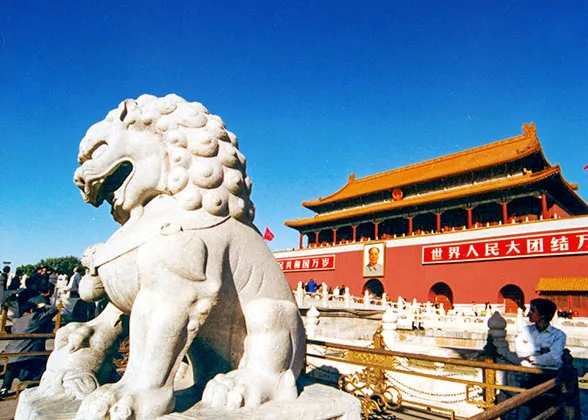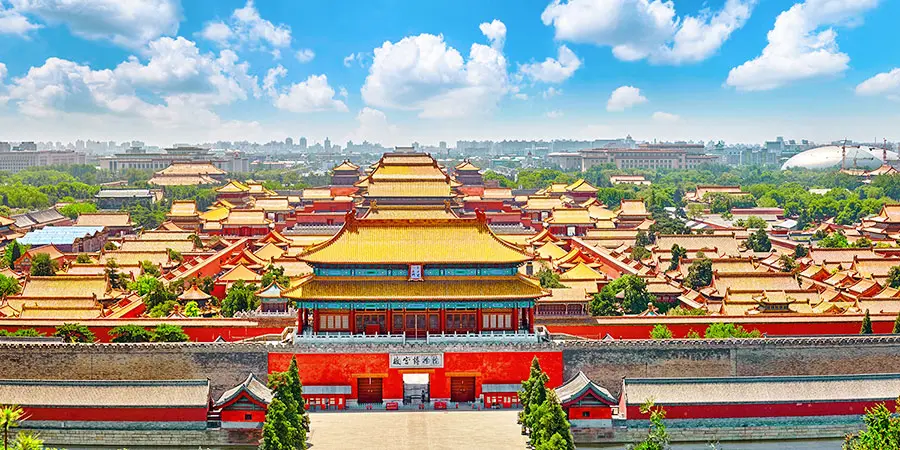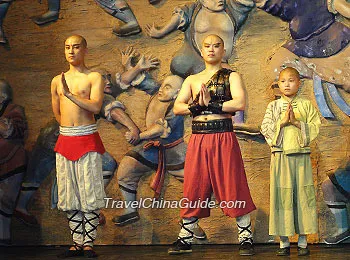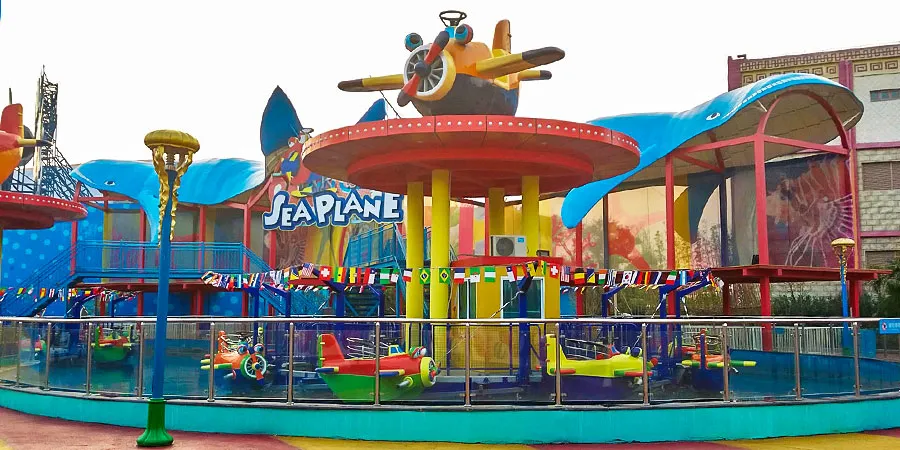8 Interesting Places in Beijing You May Not Know
Beijing, the capital city with long history in China, has lots of popular attractions. For common tourists, Forbidden City, Tiananmen Square, Summer Palace and so on are must sees. However, besides these, there are many fun places in Beijing you may not know but worth visiting. If you want to experience something fun and explore more in Beijing, you shouldn’t miss the following 8 interesting places in Beijing:
1
Imperial Ancestral Temple (Working People’s Cultural Palace)
Maybe everyone knows Forbidden City, but doesn’t know the Imperial Ancestral Temple located to its east. First built in 1420, Beijing Imperial Ancestral Temple was where the emperors of Ming (1368 - 1644) and Qing (1644 - 1911) dynasties worshiped their ancestors and prayed for blessings. In 1950, it was opened to the public as Working People’s Cultural Palace. In ancient China, people valued the god and their ancestors than themselves, so did the emperors. So, as a place to worship ancestors, the Imperial Ancestral Temple was constructed grandly. Its main hall is 32.5 meters (106 feet) tall, even taller than the main hall in the Forbidden City, the emperor’s dwelling. This interesting place in Beijing extends 475 meters (520 yards) long from north to south, and 295 meters (320 yards) wide from east to west in a rectangle shape. The architecture is well preserved, with the same style to that of the Forbidden City. Inside, there are three enclosing red walls, which separates three main halls.
2
Houhai
Houhai, one part of Shichahai, consists of a large water area and traditional style architecture. As one of places of interest in Beijing, it is popular among local youngsters and tourists. During daytime, one can paddle a boat to get relaxed, or take a rickshaw to explore those Hutongs & Old Beijing Courtyards (Siheyuan), or walk into a roadside restaurant to enjoy some local food like Quick-fried Tripe, Stewed Liver and Noodles with Soy Bean Paste. In summer, the blooming lotus flowers should not be missed. After the sun sets, you can spend a colorful life in one of those bars.
3
Shijia Hutong Museum
Situated at No.24 Courtyard of Shijia Hutong to the east of Wangfujing Street, Shijia Hutong Museum should be added on the list of Interesting Places in Beijing. If you can only have rough understandings of Beijing Hutongs in Houhai, then you will be able to learn Hutong Culture deeply and comprehensively here. The museum itself is a traditional courtyard. As the first Hutong Museum in the city, it contains miniature models of 130 courtyards, pictures and words recording the shaping and development of Hutongs in Beijing, and daily life articles in Hutongs of last century. In 2015, Prince William of the United Kingdom visited the Shijia Hutong Museum. If you are interested in Hutong Culture, you shouldn’t miss it.
Referred to fun places in Beijing, Dashilar Street should be mentioned. In Old Beijing, there was a common saying that ‘Dashilar, the Paradise of Shopping’. Located at the west side of Qianmen Street, Dashilar has been one of the popular commercial streets in the city for 500 years, where many traditional Beijing handicraft brands gather. Among them, Rui Fu Xiang Silk Shop and Nei Lian Sheng Shoes Store are must-visit time-honored shops. More and more people come here to purchase featured souvenirs nowadays. Besides, tourists can taste all kinds of local snacks here, like Fried Dumplings, Quick-boiled Tripe, Wheaten Cake Boiled in Meat Broth, Mung Bean Milk, Quan Ju De Peking Duck and Noodles with Soy Bean Paste.
5
Nanchizi Street
Located to the east side of the Forbidden City and Imperial Ancestral Temple, this area was used to store necessities for royal families, hence forbidden to common people and the constructions here are grand and of high rank. In the early years of Republic of China (1912-1949), Nanchizi Street was connected to East Chang’an Street, then common people are allowed to live here. Although only 800 meters (880 yards) long, what makes the street one of the fun places in Beijing are preserved historical architecture on two sides, including Huangshicheng, Pudong Temple, as well as Hutongs lined with courtyards. Huangshicheng is the royal archives center. Interestingly, it was totally built of stones and bricks without any use of woods or nails for fire protection. Pudong Temple was the resident of crown prince. It can be accessed from busiest Chang'an Street today.
When it comes to the Great Wall of China, the first thing that comes into mind is Badaling and Mutianyu. However, Jinshanling Great Wall is more interesting. It is located about 130 kilometers (80 miles) away from downtown Beijing, reputed as the ‘Paradise of Photography’ due to its breathtaking natural scenery. Jinshanling is also a recommended place for experienced hikers, having 67 watchtowers and 3 beacon towers. With less tourists, you would have more quiet and leisure time here. Interestingly, there is a camp site at the foot of Jinshanling, which is the only allowed camp site along the Great Wall in Beijing.
7
China Railway Museum (Eastern Suburbs Museum)
As the only national and specialized museum of the railways, China Railway Museum has three branch museums: Zheng Yang Gate Museum, Eastern Suburbs Museum, and Zhan Tianyou Memorial Hall. They collect railway cultural relics and display achievements of China Railway. Among them, Eastern Suburbs Museum can be regarded as one of fun places in Beijing, which is located in Chaoyang District.
Being one of Beijing points of interest, the museum collects more than 100 train locomotives in all periods of China, including the oldest steam locomotives, narrow gauge trains, diesel locomotives, electric locomotives and today’s advanced bullet trains, showing the evolution history of China trains. Among them, locomotives named after Chinese leaders such as “No. 0 Steam Locomotive”, “Maozedong Locomotive” and “Zhude Locomotive” are the most cherished. Besides, this museum shows some old-fashioned train stations, showing the entrances, waiting halls and platforms.
Being one of Beijing points of interest, the museum collects more than 100 train locomotives in all periods of China, including the oldest steam locomotives, narrow gauge trains, diesel locomotives, electric locomotives and today’s advanced bullet trains, showing the evolution history of China trains. Among them, locomotives named after Chinese leaders such as “No. 0 Steam Locomotive”, “Maozedong Locomotive” and “Zhude Locomotive” are the most cherished. Besides, this museum shows some old-fashioned train stations, showing the entrances, waiting halls and platforms.
8
Fayuan Temple & Xuannan Cultural Museum
Fayuan Temple is hailed as one of the interesting places in Beijing for it is not only the oldest temple in Beijing dating to 645, but also the the site of China Buddhist Academy and China Buddhist Library and Museum, somehow a “Buddhism university” to study and have a deeper understanding about Buddhist culture.
In Qing Dynasty, the south area to Xuanwumen is called “Xuannan”, literally south to the Xuanwumen. People watched performances like juggling and sought for folk entertainments here. Besides, many students and scholars gathered here. Therefore, the unique folk culture, commercial culture and scholars culture form a unique culture in Beijing, called Xuannan Culture. With the theme of Xuannan Culture, Xuannan Cultural Museum is situated inside Changchun Temple, about 1,500 meters (1,800 yards) north to Fayuan Temple. As one of fun places in Beijing, the museum is divided into 6 exhibition halls, including Xuannan Scholars Hall, Revolutionary Martyrs Hall, Xuannan Folk Culture Hall, Xuannan Commercial Culture Hall, National Unity Hall and Xuannan Culture Protection Hall. Tourists can see a time-honored commercial street in Commercial Culture Hall. Various signs hanging along the street and other traditional handicraft performance models show the prosperity of Xuannan's business economy at that time.
In Qing Dynasty, the south area to Xuanwumen is called “Xuannan”, literally south to the Xuanwumen. People watched performances like juggling and sought for folk entertainments here. Besides, many students and scholars gathered here. Therefore, the unique folk culture, commercial culture and scholars culture form a unique culture in Beijing, called Xuannan Culture. With the theme of Xuannan Culture, Xuannan Cultural Museum is situated inside Changchun Temple, about 1,500 meters (1,800 yards) north to Fayuan Temple. As one of fun places in Beijing, the museum is divided into 6 exhibition halls, including Xuannan Scholars Hall, Revolutionary Martyrs Hall, Xuannan Folk Culture Hall, Xuannan Commercial Culture Hall, National Unity Hall and Xuannan Culture Protection Hall. Tourists can see a time-honored commercial street in Commercial Culture Hall. Various signs hanging along the street and other traditional handicraft performance models show the prosperity of Xuannan's business economy at that time.
You May Like
- Last updated on Aug. 29, 2024 by Gabby Li -



